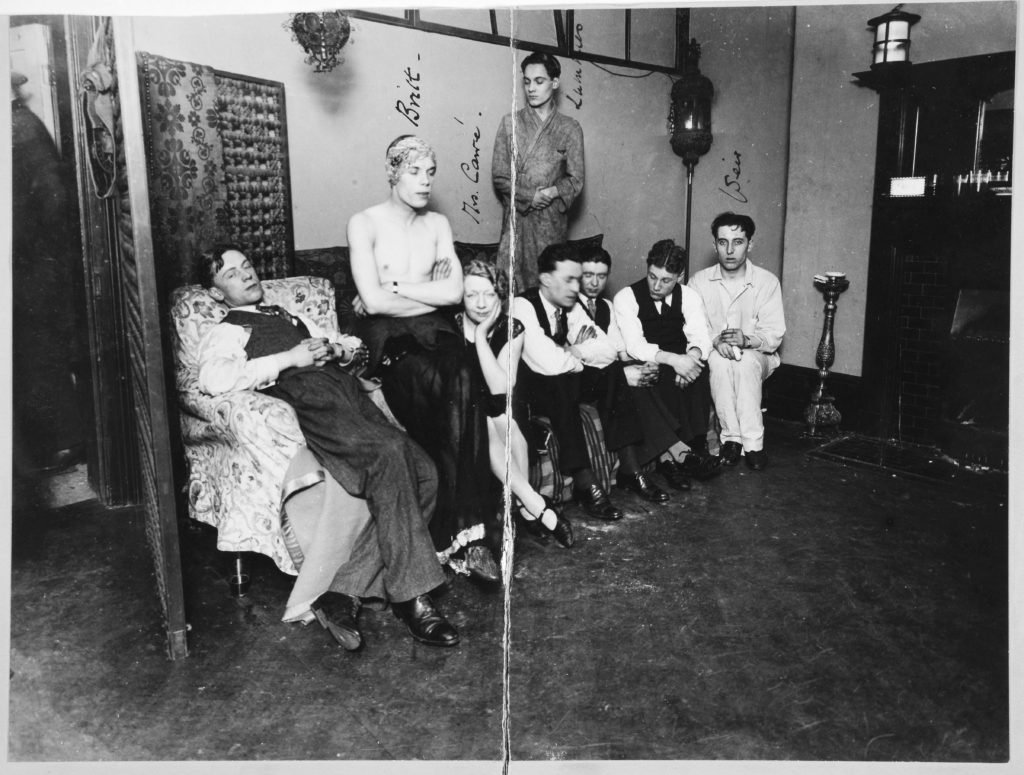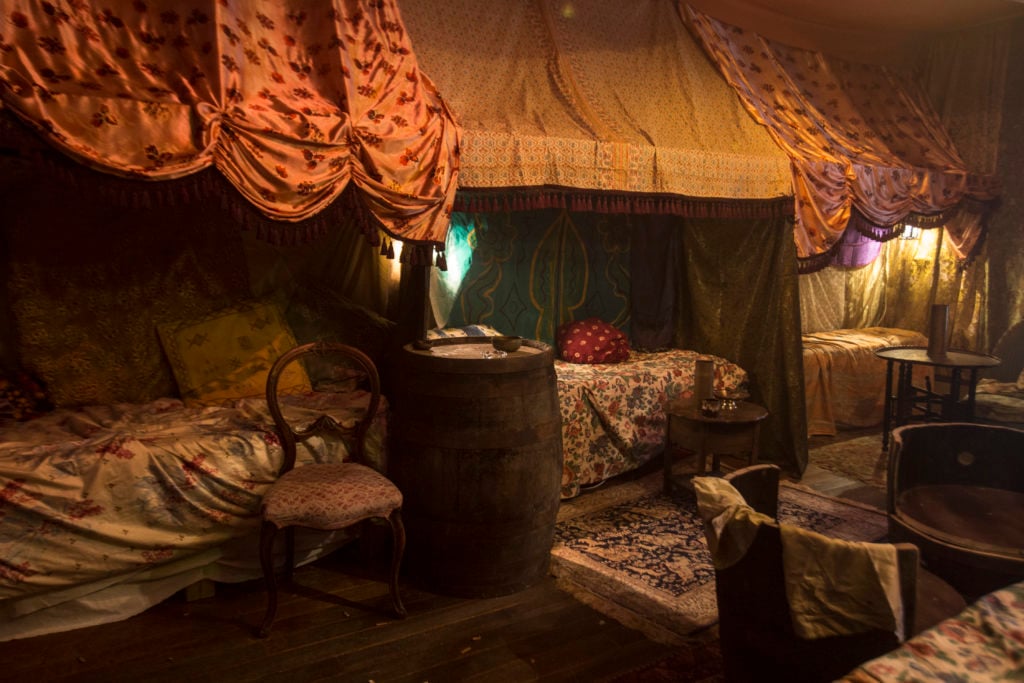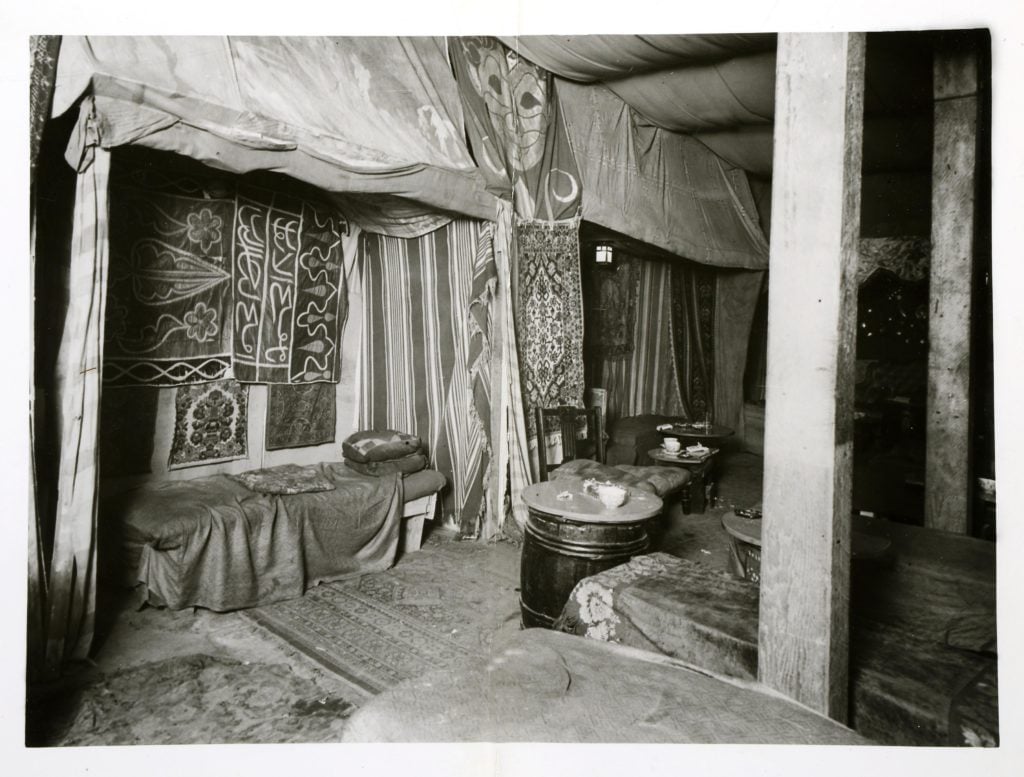Art World
Underground 1930s London Club Comes Back to Life With ‘Queer City’
The project comes as Tate Britain gears up for its exhibition of Queer British Art.

The project comes as Tate Britain gears up for its exhibition of Queer British Art.

Caroline Elbaor

“Queer City: London Club Culture 1918-1967” is the result of a collaboration between the UK’s National Trust and National Archives, in which the two organizations have re-created The Caravan, a queer-friendly members club in central London that existed for a mere six weeks in 1934, before being raided and closed by the police.
From March 2-26, visitors will be able to visit the club, and even have a drink there during evening openings.

Interior of the recreation of The Caravan Club. Image courtesy Sophia Schorr.
Situated at what is usually the Freud Cafe-Bar in Shaftesbury Avenue, the recreation of The Caravan sits almost on the exact site of the original club. Next door, one can peer into the long alleyway to see the actual entrance (inaccessible to the public) to the short-lived club.
The recreation comes as part of a wider, year-long initiative, titled “Prejudice and Pride,” which commemorates 50 years since the partial decriminalization of homosexuality in the UK.
“While the project will be an opportunity to celebrate the partial decriminalization of same sex relationships, it will also confront the realities of those lives that were fettered, destroyed, or worse, by prejudice of that era. It provides a timely reminder of the importance of side-lined cultures to our national heritage,” said Joseph Watson, London Creative Director for the National Trust.
A particularly engaging accompaniment to the recreation of The Caravan is the hour-long walking tour of Soho, guided by representatives of the National Trust and National Archives. Beginning at Soho Square, the tour leads through the area’s winding streets, stopping at sites of former clubs and theaters that were part of the queer club culture, and celebrating the prominent figures from the community that frequented them.
As part of the program, visitors will be able to pore over photographs, court reports, police papers, and witness statements selected from the The National Archives’ collection that document The Caravan and other clubs from the era, leading to an understanding of just how persecuted those who identified as LGBTQ+ were.

A 1934 image of the original Caravan Club. Courtesy of the National Archives.
Police engaged in entrapment strategies to arrest homosexual men, neighbors in the Soho area often reported such spaces to the authorities in attempts to get them shut down, and—in a particularly nasty tactic—once club-goers were arrested, policemen were known to blot detainees’ faces to see if they were wearing makeup. If so, they were automatically deemed degenerates.
Following the recent exhibition “Gay Gotham: Art and Underground Culture in New York” at the Museum of the City of New York, interest in the urban histories of LGBTQ+ culture seems to be rapidly growing.
On April 5, London’s Tate Britain will open “Queer British Art 1861–1967.” But, while Tate’s exhibition promises to be a widespread celebration of many identities, “Queer City” remains a true, if understated, gem.
The re-creation of The Caravan captures the spirit of the club as part of the wider queer culture, successfully translating historical memory into a contemporary iteration of the lively club it was in 1934, while reminding visitors that this safe space was violated by the prejudices held against what it stood for.